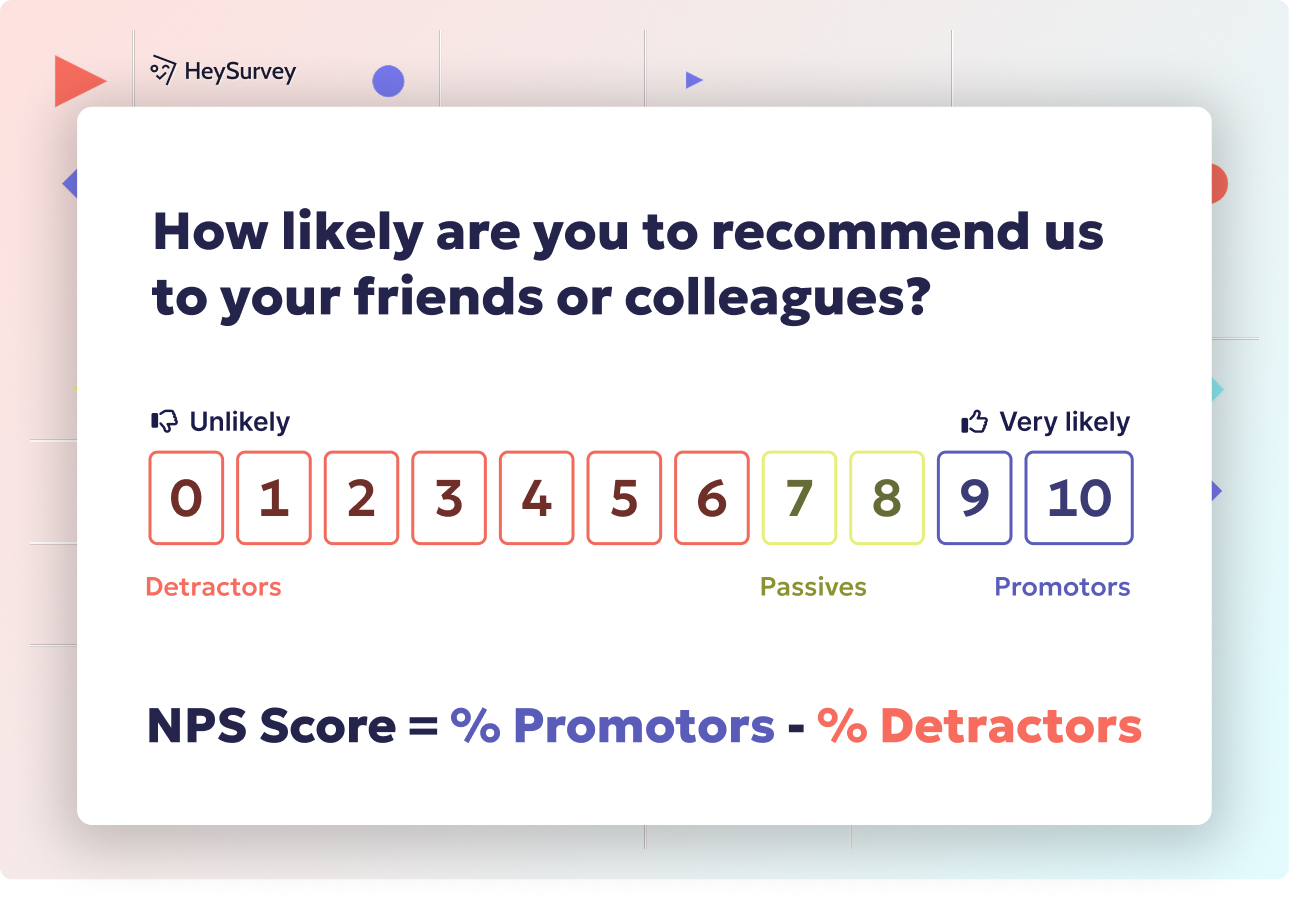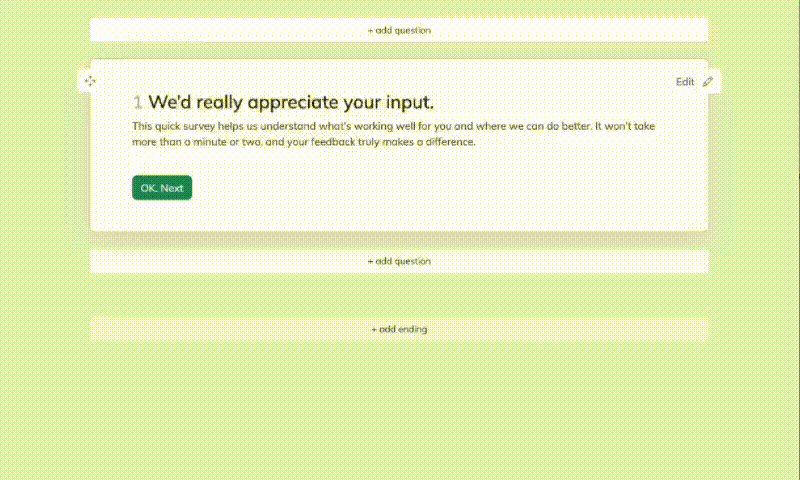32 Pre and Post Training Survey Questions for Effective L&D
Discover 28 expert pre and post training survey questions with templates, uses, and best practices for effective learning evaluation and L&D feedback.
Learning and development (L&D) programs are powered by feedback, and training survey questions are the batteries that keep everything running smoothly. Pre-training and post-training surveys act as a set of bookends—they support your learning evaluation efforts from planning to performance. Whether you’re whipping up a pre-training questionnaire or slicing through scores with a post-training survey, both are essential for collecting L&D feedback that drives improvement. This guide explores eight types of surveys—each uniquely useful—and serves up ready-to-copy sample questions to build your most effective training feedback toolkit yet.
Pre-Training Needs & Gap Analysis Survey
A pre-training needs & gap analysis survey is the first step in crafting a results-driven training initiative. Its main goal? Identify skill gaps and knowledge deficiencies before rolling out your content. L&D teams use this survey 4-6 weeks ahead of a major program or during an annual needs assessment. The data helps you spot trends, prioritize learning objectives, and ultimately design targeted sessions.
Understanding where your workforce stands is critical for success. By proactively surveying learners, you can pinpoint which teams need what support. Sending this survey well ahead of training also builds engagement, allowing everyone to have a stake in the learning journey. Learners feel seen, and L&D teams set each program up for measurable impact.
Some highlights of this survey include its ability to:
- Uncover hidden pain points across departments
- Inform custom content for specific groups
- Set a baseline for future training evaluation
Here are sample questions you can copy straight into your needs analysis:
Which of the following tasks do you find most challenging in your current role?
Rate your confidence in performing specific job skills on a scale of 1–5.
What new knowledge would help you reach this year’s performance goals?
Which delivery format (in-person, e-learning, blended) best supports your learning?
List any tools or software you would like additional training on.
By leveraging these pre-training questionnaire examples, you lay the groundwork for tailored, gap-closing programs.
Conducting pre-training needs assessments effectively identifies skill gaps, enabling targeted training that enhances employee performance and aligns with organizational goals. (clarityconsultants.com)

Creating your pre- or post-training survey with HeySurvey is as easy as 1-2-3. Here’s a quick guide to get you rolling—no experience needed!
Step 1: Create a New Survey
- Head to the HeySurvey dashboard and click “Create New Survey.”
- You can pick an empty sheet to start fresh, or choose a pre-built template tailored for training surveys to save time.
- Give your survey an internal name so you can find it later.
Step 2: Add Your Questions
- Click “Add Question” to insert each required question—choose from text input, multiple choice, scale ratings, and more.
- Type in your question text exactly how you want learners to see it.
- Use the settings to make questions required, add descriptions, or include images if that fits your style.
- Feeling fancy? Add branching logic so responses steer learners to relevant follow-up questions only.
Step 3: Preview and Publish
- Hit “Preview” to see how your survey looks across devices—desktop, tablet, or mobile.
- Once happy, click “Publish” to generate a shareable link, embed code, or QR code. (You will need an account to publish and collect responses.)
- Share your survey link with your learners directly or embed it on your LMS or intranet.
Bonus Step 1: Apply Branding
- Open the Designer Sidebar and upload your logo to add a professional touch.
- Customize fonts, colors, backgrounds, and animations to match your company’s style.
Bonus Step 2: Define Your Survey Settings
- Use the Settings Panel to set start/end dates, response limits, or redirect URLs when learners finish.
- Choose whether respondents can view summarized results right after submitting.
Bonus Step 3: Use Branching for Smarter Surveys
- Set up branching logic to guide learners through different question paths based on their answers.
- This makes your survey more personalized and keeps respondents engaged without irrelevant questions.
Ready to get started? Just hit the button below to open a training survey template pre-loaded with questions you can edit and publish immediately. Your perfect survey awaits!
Pre-Training Baseline Knowledge Quiz
A pre-training baseline knowledge quiz captures your learners’ starting line—before the training marathon begins. This is your best shot at measuring learning gains, because you can compare pre- and post-training results with real data. This quiz is usually delivered right before a workshop begins, or as the kick-off activity in an e-learning module.
This approach gives you real-time feedback on what people know (and don’t). Not only does it keep things measurable, but it also highlights the value of training survey questions for all stakeholders. When learners see their baseline results, it can spark their motivation to learn. For L&D practitioners, these results provide a treasure trove of learning evaluation data.
Top reasons to implement a baseline quiz:
- Set clear expectations for knowledge outcomes
- Motivate learners with a “before and after” snapshot
- Reveal which topics need the most instructional time
Sample baseline quiz questions to use:
Which of the following best describes concept A? (Multiple choice)
True or False: Principle B is required in every project phase.
You encounter situation C. What’s your best next action? (Scenario-based)
In one sentence, define the term D. (Short answer)
Select all tools you use for task E from the list below.
With these questions, you’re setting up quantifiable L&D feedback—and making learning gains crystal clear.
Retrospective pre-post assessments can mitigate response shift bias, providing more accurate measures of training effectiveness. (sciencedirect.com)
Pre-Training Motivation & Expectations Survey
The pre-training motivation & expectations survey gauges learner mindset right before the learning event. Delivered 1-2 weeks in advance, it uncovers what makes your audience tick. This insight empowers trainers to tailor real-world examples, incentives, and activities for maximum impact.
When you know what excites (or concerns) learners, you can design an experience that feels fresh and personal. It’s a smart move for keeping engagement high and smoothing out any bumps related to motivation. Plus, you’ll gather valuable data on perceived relevance—a key driver of learning ROI.
A motivation survey helps L&D teams to:
- Uncover desired learning outcomes straight from learners
- Adapt session content for direct workplace relevance
- Identify any potential challenges to completion in advance
Here are sample questions to include:
What do you hope to achieve by attending this training?
How relevant do you believe this topic is to your current job? (Scale of 1–5)
Before attending, how likely are you to recommend this training topic to peers?
Which learning activities (case studies, simulations, discussions) motivate you most?
What barriers, if any, might prevent you from completing this program?
Using these pre-training questionnaire ideas boosts your training evaluation and keeps sessions lively and learner-centered.
Post-Training Reaction & Satisfaction Survey
The post-training reaction & satisfaction survey is the first checkpoint after your program wraps up. It’s your go-to tool for collecting Kirkpatrick Level 1 feedback—“Did they like it?” This survey should go out within 24 hours of course completion, while impressions are still fresh and honest.
Why is immediate L&D feedback so powerful? It gives your team real, actionable answers on what resonated and what fell flat. Learners can share their takeaways—while pinpointing areas for future improvement. A well-designed survey also builds a feedback habit, making everyone feel their voices matter.
Top reasons post-training reaction surveys work:
- Collect fast, honest feedback from engaged participants
- Identify highlight moments and stumbling blocks
- Boost your training with user-driven ideas and testimonials
Here are ready-to-use questions for your satisfaction survey:
Rate your overall satisfaction with this training experience.
How engaging were the instructor or facilitator’s teaching methods?
Which module added the most value for you, and why?
How would you improve this course for future participants?
Would you recommend this training to a colleague? (Yes/No—please explain)
Arm your team with these effective training survey prompts, and you’ll unlock actionable ways to enhance your programs and learning culture.
Post-training reaction surveys are strongly connected to post-training motivation and moderately connected to self-efficacy, but only modestly related to immediate knowledge outcomes and unrelated to delayed knowledge. (qic-wd.org)
Post-Training Knowledge Retention Survey
The post-training knowledge retention survey is your secret weapon for tracking real learning impact. Administered about 30–60 days after the session, this survey measures what learners actually remember—not just what they liked. Compare it to the baseline quiz for a full learning evaluation snapshot.
This survey does more than test knowledge. It highlights which concepts “stuck,” and which topics need another look. Plus, it provides data to optimize future sessions with targeted refresher activities, microlearning, or job aids. In the end, it’s about making sure your work sticks—with measurable L&D feedback.
Why add a knowledge retention survey?
- Identify which takeaways are retained long-term
- Spot areas needing reinforcement or follow-up
- Support a continuous improvement cycle in your training operation
Sample questions for knowledge retention evaluation:
Which of the following statements about concept A is correct? (Multiple choice)
Please arrange the steps of process B in the correct order. (Ranking or drag-and-drop)
Faced with challenge C, select the best response below.
Complete the following formula D: _________.
List two benefits of using technique E in your role. (Short answer)
With these training survey questions, you gather the data to prove training’s value—and plan smarter next time.
Post-Training Behavior & Skill Transfer Survey
The post-training behavior & skill transfer survey is the bridge between classroom and cubicle. Sent 60–90 days after completion, it asks whether learners are using new skills on the job—and what’s helping or hindering that transfer.
This level of learning evaluation digs deep into Kirkpatrick’s Level 3: application. The survey can also include manager input to cross-check self-reported data. These insights uncover the “so what?” behind your programs—showing whether training is truly moving the performance needle.
The benefits of behavior surveys include:
- Spotting real-world application of new skills
- Identifying obstacles that block transfer from training room to workflow
- Gathering concrete examples of skill usage for storytelling and best practice sharing
Sample questions for a behavior & skill transfer survey:
How often have you used [skill] since completing the training? (Never, Rarely, Sometimes, Often, Daily)
Describe a recent situation where what you learned solved a work problem.
What obstacles are preventing you from applying the new skills?
On a scale of 1–5, how confident are you performing [task] now?
Has your manager provided opportunities to practice these skills? (Yes/No)
Make use of these L&D feedback questions to track the true influence of your initiative and refine your programs for even greater success.
Post-Training ROI & Business Impact Survey
The ultimate measure of training is its impact on business metrics. The post-training ROI & business impact survey dives into Kirkpatrick Level 4, seeking input on organizational results and learning ROI. Launch this survey 3–6 months after training, and pair it with performance data for full effect.
This survey goes beyond knowledge checks or satisfaction ratings—it asks, “Did we move the dial?” You might discover time saved on a process, a boost in quality metrics, or improved team morale. When you tie survey responses to KPIs and financial metrics, you prove the business case for L&D.
Why prioritize post-training ROI surveys?
- Quantify the impact of training on bottom-line results
- Pinpoint specific gains—from productivity to culture
- Build a compelling story for future L&D investments
Here’s a set of sample questions for measuring business impact:
Estimate the time saved per week thanks to applying new processes learned.
Have you observed measurable improvements in key performance indicators (quality, sales, NPS)?
What financial or productivity gains have resulted from this training?
How has this training influenced team collaboration and morale?
Would additional advanced training further increase this impact? (Scale of 1–5)
These learning evaluation questions provide you with the data and stories you need to showcase—and scale—your best work.
Best Practices: Dos and Don’ts for Designing Pre & Post Training Surveys
Designing an effective training survey is both art and science. To make your surveys sing, follow these tried and true best practices—and dodge the common pitfalls.
Dos
- Keep surveys concise and laser-focused
- Align every question with a specific learning objective
- Use a mix of question types (multiple-choice, open-ended, scales)
- Automate reminders to increase response rates
- Benchmark results against previous training for clear progress tracking
- Always close the feedback loop with your learners
Don’ts
- Don’t overload your survey with cliches or jargon
- Don’t ask double-barreled questions (where one item covers two topics at once)
- Don’t delay survey distribution—timing matters for honest responses
- Don’t ignore the importance of anonymous feedback
- Don’t skip the analysis and follow-up phase
When you stick to these simple guidelines, you create surveys that yield actionable insights every time. For more tips on feedback and evaluation, check out our deep dives into employee feedback templates and the Kirkpatrick model. Get creative—and watch your L&D outcomes soar with these training evaluation best practices.
Wrapping up, pre- and post-training survey questions move the needle from good intentions to measurable improvement. When you use the right survey at the right moment, you set your L&D programs up for lasting impact. Try these sample questions, stick to best practices, and you’ll build a feedback loop that keeps on giving. Happy surveying!
Related Training Survey Surveys

31 Professional Development Evaluation Survey Questions Guide
Discover 40+ professional development evaluations survey questions with 8 types of surveys to boo...

25 Knowledge Survey Questions Examples for Effective Testing
Explore 25+ knowledge survey questions examples across 7 types, with tips on crafting high-impact...

32 Coaching Survey Questions: Types, Uses & Examples
Explore 25+ coaching survey questions across key types to boost coaching impact, measure success,...
